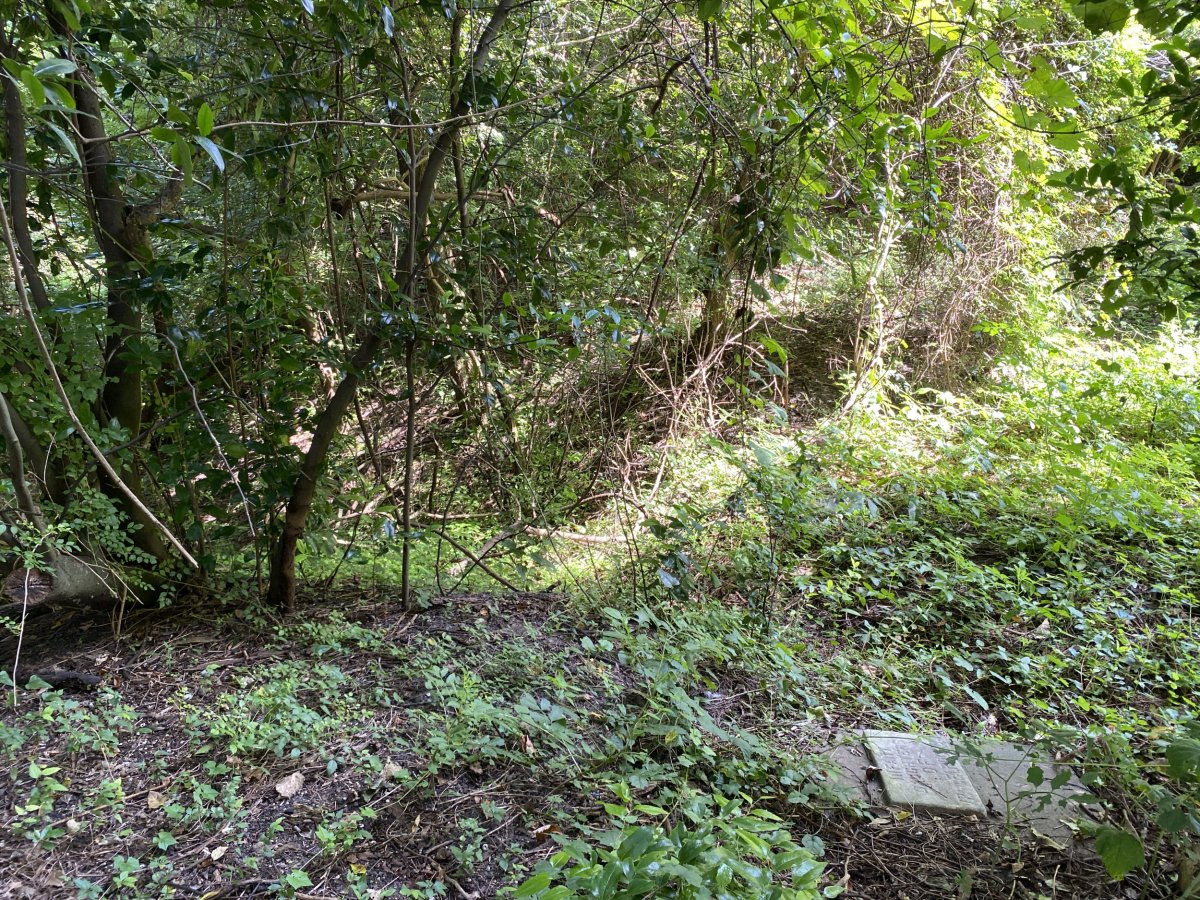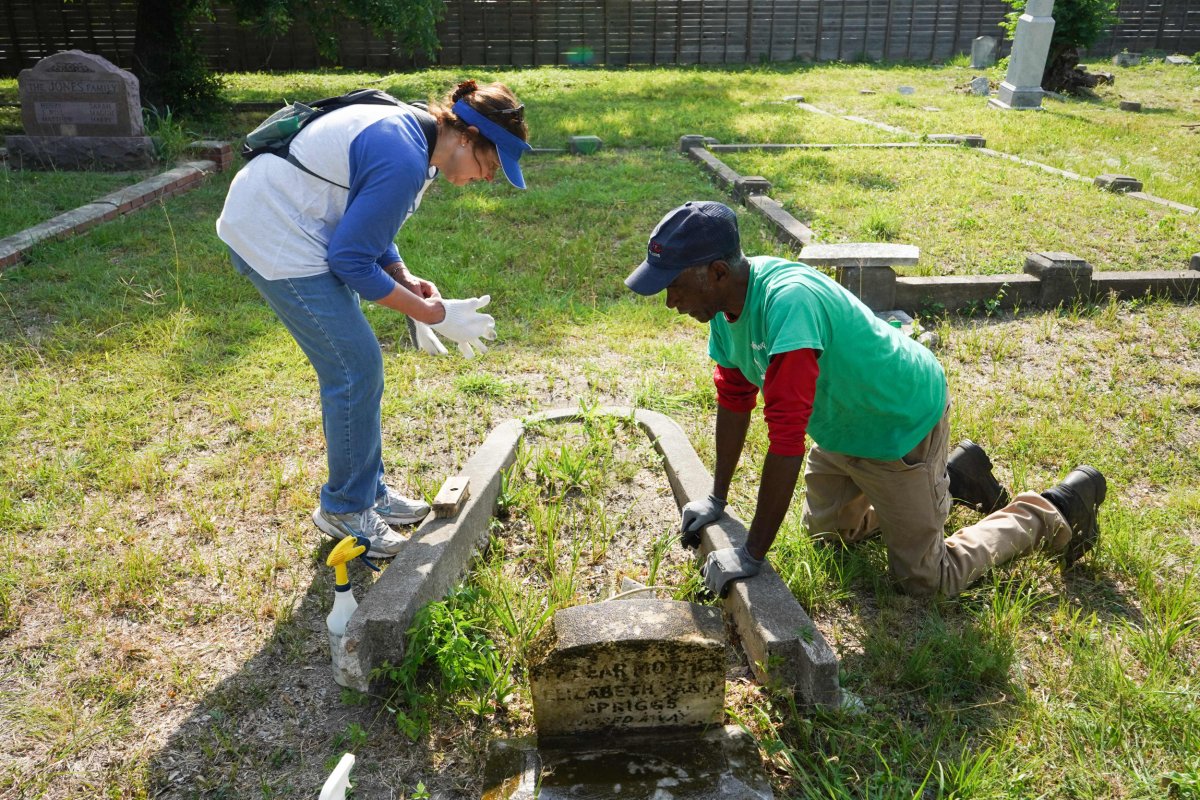Olivewood Cemetery, established in 1875, is the final resting place for some the earliest Black residents of Houston, Texas, where I was born and raised. To walk among the headstones at Olivewood, as I have with local leaders, is to grapple with the area’s fraught racial history and gain a deeper understanding of the resilience of the city’s African American community.
Until recently, walking through the cemetery was difficult given overgrown vegetation and erosion from flooding—exacerbated by nearby development—that had dislodged headstones.
Sacred burial sites across the country—sometimes unmarked or even undocumented—face growing threats to their preservation. Some of these threats are not new: Our country has a long history of removing, defacing, or otherwise disturbing unmarked sacred burial grounds and human remains in the name of both public and private development, such as widened highways or constructing new buildings.
Other threats, like flooding and erosion made worse by climate change, represent a novel challenge. As sea levels rise and extreme weather events become more common, cemeteries and burial sites are at risk of being disturbed, submerged, or even washed away. Historic African American cemeteries and the burial grounds of Indigenous people are often more likely to be affected than others.
At all levels of government, we haven’t done nearly enough to protect sites like Olivewood. The Advisory Council on Historic Preservation, an independent federal agency that I lead, is trying to rectify this, recently adopting a formal policy to address this significant, but too often overlooked, issue.
CECILE CLOCHERET/AFP via Getty Images
The need for federal action became clear during our government-to-government consultations with tribal nations, and other public comments revealing heart-wrenching stories about how the federal government and private entities (including those getting funding or permits from federal agencies) had disturbed their ancestors’ burial sites.
Many of their stories echoed the highly-publicized 1991 battle involving a Lower Manhattan cemetery containing up to 15,000 graves of enslaved and free Africans. After unearthing these graves, a federal agency refused to halt work on its planned 34-story office tower until faced with political pressure. While a small plot of land was ultimately set aside for the African Burial Ground National Monument, many graves had already been disturbed.

Photo Courtesy of Sara C. Bronin
Our new policy guides federal agencies when they encounter, or think they might encounter, burial sites, human remains, or funerary objects. The policy explicitly recognizes that the federal government has hurt many with its actions, particularly American Indian, Alaska Native, Native Hawaiian, Indigenous, and African American communities. It calls out the federal Indian boarding school system for traumatizing tribal families and communities, putting children into marked and unmarked graves.
In light of this tainted legacy, the policy says that federal agencies should avoid disturbance of disinterment unless there are no alternatives—and not without early and meaningful consultation with descendant communities, aiming to reach consensus on their treatment. It asserts that federal decision-makers should, to “the maximum extent possible,” defer to the treatment requests of descendants or other associated groups. Encompassed in this principle is deference to Indigenous knowledge—information provided by an Indigenous person and reflecting their knowledge, experience, understanding, or observation. The policy also calls for better planning and protection for climate change effects—like erosion and increased precipitation.

CECILE CLOCHERET/AFP via Getty Images
But respecting sacred resources is not just a federal obligation. We were heartened to see New York State adopt a bill that, for the first time, protects unmarked Native American burial sites from destruction when human remains or funerary objects are unearthed by developers. Other state and local governments should follow New York’s lead, drawing from our policy statement to ensure consistency across public actors.
Back in my hometown of Houston, the nonprofit Descendants of Olivewood is currently fighting to stop a new sports complex in the area that could disturb the unmarked graves of infants. A bit of funding from the National Trust for Historic Preservation will help curb flooding and mitigate further damage.
The protection of our country’s most sacred sites shouldn’t depend on piecemeal private funding and volunteers. We must develop and implement stronger policies to protect these sites from the threats of development and climate change. We owe it to our ancestors, and to each other, to ensure that burial grounds and sacred objects are treated with the dignity and respect they deserve.
Sara C. Bronin is the chair of the Advisory Council on Historic Preservation, an independent federal agency that promotes the preservation of our nation’s diverse historic resources, and advises the president and the Congress on national historic preservation policy.
The views expressed in this article are the writer’s own.


